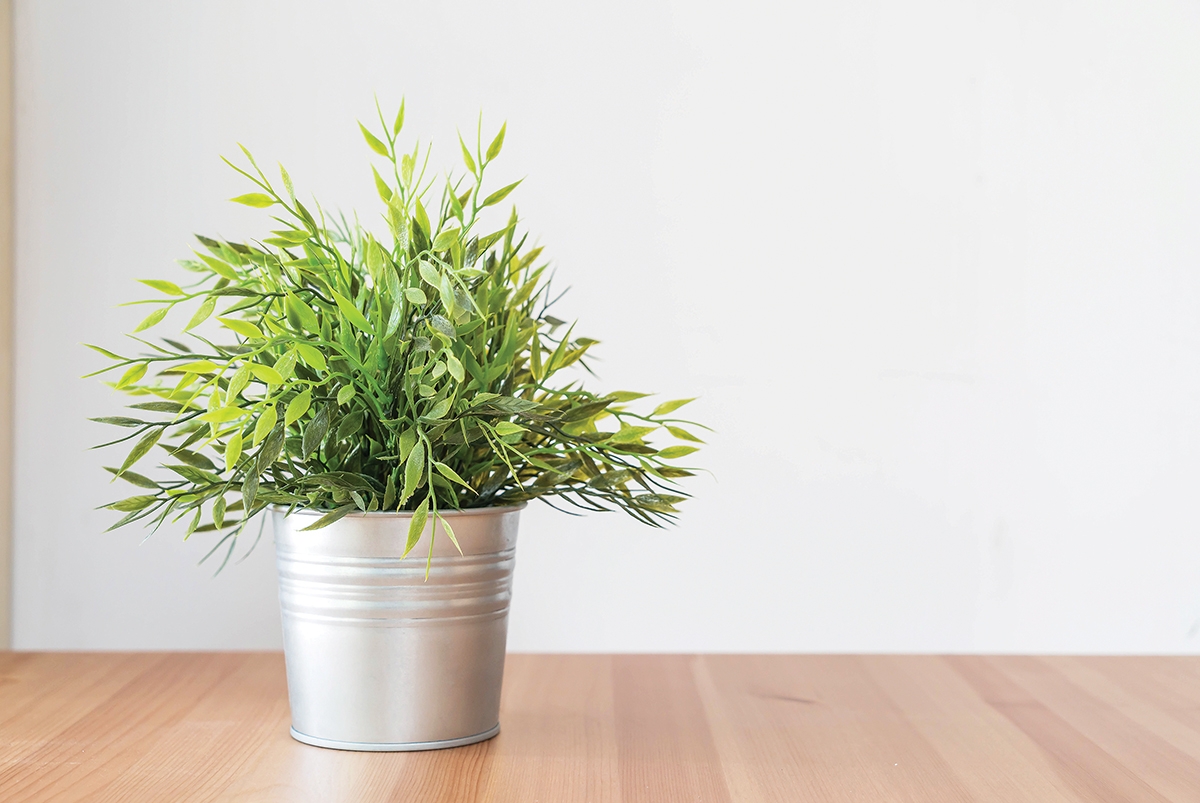Happy Houseplants
Indoor Winter Plant Care

Whether your houseplants spent this past summer basking gloriously in the humid heat or chilled out in the house by their favorite window, the shorter, cooler days of winter call for a change-up to their daily routine. If you’re into low maintenance, then you’ll be glad to know that this translates into less work for you. Follow these guidelines for happy houseplants through winter.
– Watch for hitchhikers. If your plants were outside for the summer, they may have some freeloaders that hitched a ride into the house for the winter. Inspect them for signs of insects and spray with horticultural oil or treat with a systemic insecticide. Keep an eye on them for a few weeks to make sure no lurkers take you by surprise. Another pest that pops up this time of year is the fungus gnat – that teeny little flying insect fluttering around your houseplants. In small populations, they won’t kill a plant, but if you have many of them, back off on your watering schedule, allowing the top 1” of soil to dry out between waterings and then apply some Mosquito Bits to the top of the soil and water it in.
– Let there be light. Many houseplants will enjoy being moved to a brighter window during the winter. The reduced heat and glare means they can tolerate windows that might be too hot in the summer. Just make sure they aren’t pressed up against cold glass. If their window seems cold, you can place folded cloths under pots to help insulate them. If moving them isn’t desirable, they will likely be just fine where you have them if they have been thriving up until now. Rotate the pot a quarter turn once a week, so all sides receive similar light. Otherwise, you can consider one of the many LED plant lights that are available now to add supplemental light for your plants.
– Avoid drafts, both hot and cold. The air inside the home in winter is much drier than in the summer months. Keeping plants near heating vents or fireplaces will just exacerbate that problem. If, for whatever reason, you don’t want to move your plants, an air deflector can be deployed over a vent to help direct flow away from plants. Even worse is exposure to frequent cold drafts. Many plants will be unhappy spending the winter near a main door for that reason. Move those babies to a warmer spot until the weather moderates in late spring.
– Some of us like humidity. As much as the rest of us grump about the muggy summer weather, most plants love all that humidity. Since the air inside is so much drier in winter, pamper your green housemates with some extra moisture. You can set plant pots on humidity trays, which are essentially a perched bed above a tray of water. Trays filled with pebbles, decorative glass, etc. – which keep the plant pots above water – can be used or you can buy pre-formed plastic trays with raised ridges for setting plant pots upon. Cluster the plants so they can get sweaty together with transpiration (what happens on the window sill, stays on the window sill). People who like to hover over their houseplants can get mister bottles so they can frequently mist their plant babies. (Tip: don’t mist fuzzy plants like African violets.) If you really want to give your plants a treat, get them their own humidifier. You’ll probably find that you appreciate the extra humidity, too!
– We’re in hibernation mode. You wouldn’t wake up a hibernating bear in the middle of winter and force feed it, would you? Well, your plants are in a similar state during winter. They aren’t fully dormant like some of their outdoor brethren, but they require less water and fertilizer this time of year. Cut back to one-quarter strength on your fertilizer solutions – or even skip them altogether – if your plants have been growing well during the year and don’t show signs of deficiencies. Cut back on water, too. Feel the soil down to the first or second knuckle to see if it’s damp down there, and lift the pot to see if it feels heavy with moisture. You can push the envelope a little as underwatering will be better than overwatering now. Some plants, like cacti, may not require any water at all for a month or more. Signs that you’ve gone too far: the plant starts dropping leaves or is wilting. Then you’re just being cruel, you plant torturer!
As always, if you find yourself with an unhappy plant and need help, bring them in to your local garden center. Chances are the staff can help sort out what’s wrong and give you guidance for turning the problem around. If not, they can suggest a replacement that might be more suited to your home and lifestyle.
Tina Mast
Communications director at Homewood Nursery in Raleigh.
- info@homewoodnursery.com
- www.homewoodnursery.com
- 919-847-0117

